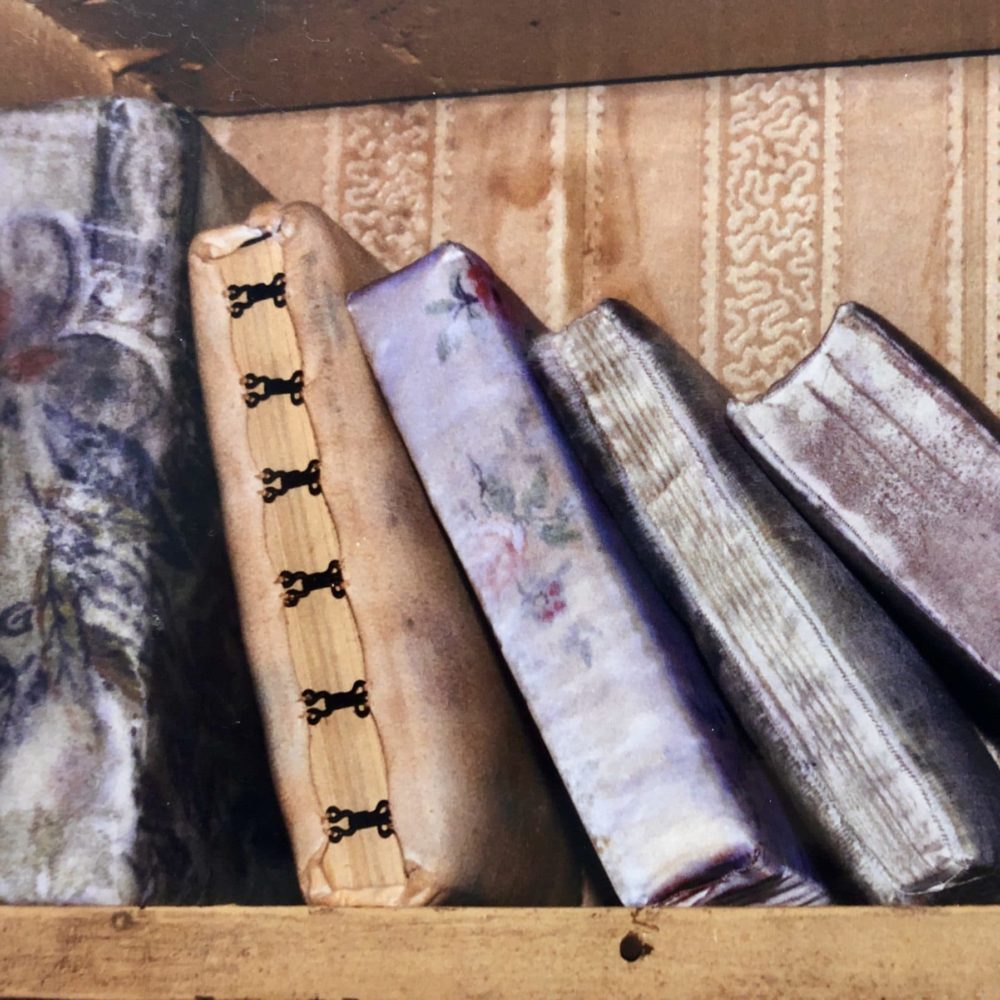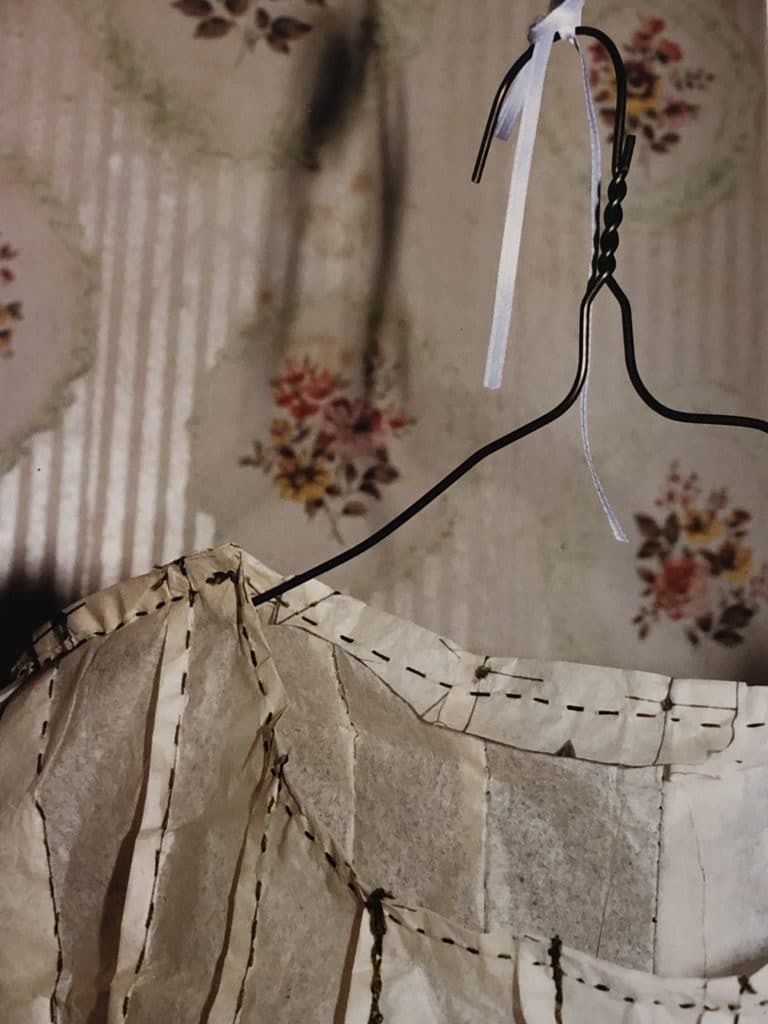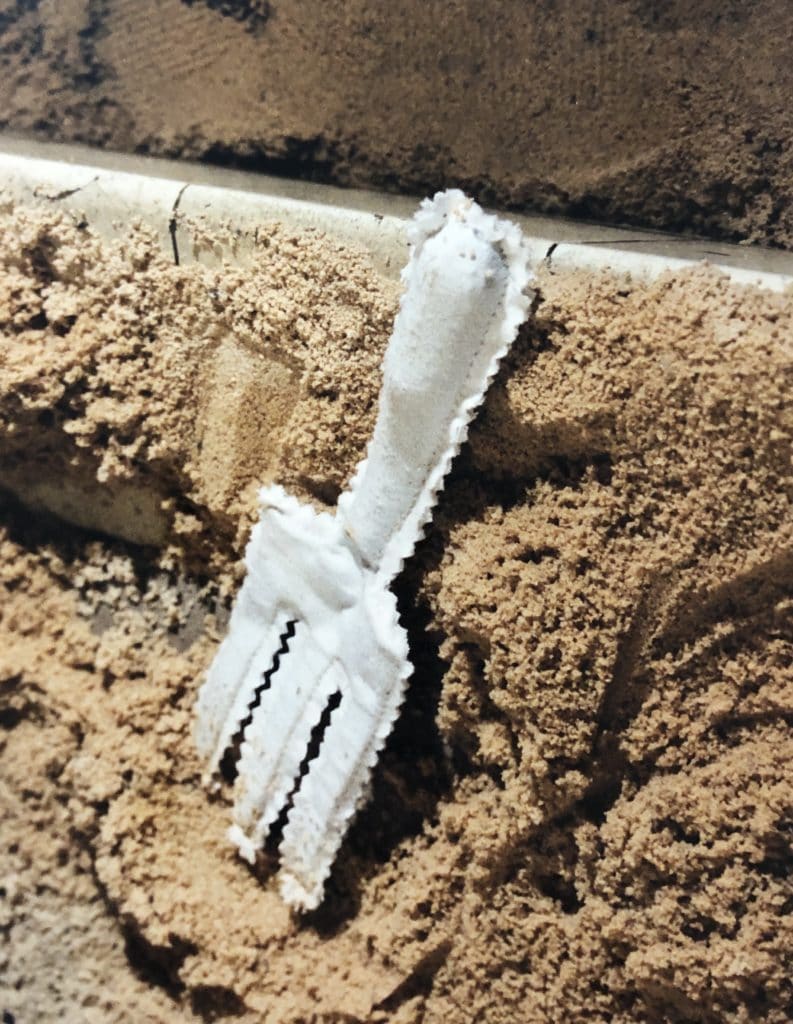
No.1 Old Dock Cottages
Whilst sitting, sewing, outside an empty and decaying old Docker’s cottage in Bristol’s harbourside, in a 3 month residency in 1999, I was joined by others with memories to share. Some would bring me a cold drink and sit on the steps, telling me tales of love and lives past, of the ex-residents, including the last resident, who used to operate the swing bridge, when taller ships came in to dock. The house, which was boarded up, had a poignant ‘presence of absence’, and it had a deep impact on my textile artworks that expressed the pain of loss before death, through Alzheimers and Dementia.


My Grandad Doug had just passed, with Alzheimer’s and the stitching became so cathartic, with cotton covered, sealed and stitched shut, pages. I used the layers of old wallpapers to ‘print’ their covers, so they looked like they had merged with the cottage walls. They were old books about the sea trade in Bristol. Their pages, histories and stories became inaccessible, like lost memories. The exhibition was held in the old uninhabited cottage kitchen, where a collection of ‘once lived in’ signs, lived on, like the ghostly pale patches where the wall plates withheld the tobacco stains. A row of ‘clothed’ clear glass cups hung on the old cup hooks, each with a tiny light inside, to represent the life within. A stitched paper wedding dress pattern gently spinning in the old closet, whenever the breeze blew, added to that feel of spirit within the fragility. Dressmakers had lived in the row of cottages, gardeners too, names with no faces, from the census over decades. There was a tribute to each personal story shared, within the installation.
Textiles and fibre arts have always fascinated me, in a historical and meaningful context. Cloth can tell a story, and hold an essence of the dressmaker, wearer and owner. It felt so appropriate to bring textiles into the cottage. It softened it. Humanised it. A woman came in to the exhibition, and hadn’t read my synopsis of the residency, or the tribute to my Grandad, but she had recently lost a relative, with dementia, and the ‘clothed’ works spoke to her. We shared a moment of real human connection and understanding. That, for me, was what the work was for.


